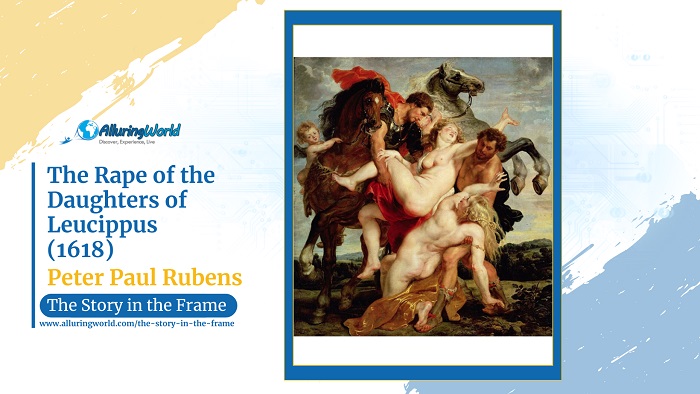Peter Paul Rubens’ The Rape of the Daughters of Leucippus is a masterpiece of Baroque art, a whirlwind of dynamic movement, vibrant color, and raw emotion where this monumental canvas, housed in the Alte Pinakothek in Munich, captures a dramatic moment from the ancient mythology, showcasing Rubens’ unparalleled ability to portray the human form in all its power and vulnerability.
About the Painters:
Peter Paul Rubens (1577-1640) was a Flemish Baroque painter, a master of dynamic composition and sensuous color, as he was one of the most influential artists of his time, known for his prolific output and his ability to synthesize classical and contemporary styles. Jan Wildens (1586-1653), who was also a Flemish landscape painter, and he collaborated with Rubens on this piece as he contributed to the landscape elements that enhanced the dramatic scene. While Rubens focused on the figures, Wildens added the atmospheric backdrop, highlighting the synergy between these two accomplished artists.
Inspiration and Reason Behind the Painting:
The painting draws inspiration from the ancient myth of Castor and Pollux, the twin sons of Leda, and according to the legend, Castor and Pollux abducted Phoebe and Hilaeira who were the daughters of Leucippus, so that they would serve as brides. The “rape” in the title should be understood within the context of the myth, referring to the forceful abduction rather than sexual violence that is considered as such in the modern sense, and Rubens, captivated by the drama and sensuality of the story, chose to portray the moment of abduction, emphasizing the power of the Dioscuri and the resistance of the women. Still, the painting reflects the Baroque fascination with dynamic movement, intense emotion, and the theatrical presentation of narrative. During the time when the painting was created, it was very common for artists to collaborate between themselves, and in this majestic creation, Rubens was in charge of creating the figures that are the focal and main point, while Wildens was in charge of the background and the landscape features the painting showcases.
What is Depicted in the Painting:
The canvas is a very intriguing riot of movement and emotion, since Castor and Pollux, the muscular Dioscuri, are depicted seizing Phoebe and Hilaeira, and while the women struggle, their bodies are twisting and turning in resistance, yet their expressions also hint at a yielding to their captors. The two horses that are presented in the background and to the left side are rearing up, adding to the sense of the chaotic energy that engulfs the whole scene. In addition, Cupid’s flutter around the equine figures emphasizes further the dramatic and sensual nature of the scene, and with the landscape that was painted by Wildens, provides a lush, natural backdrop that enhances the dynamism of the figures. The overall effect is a breathtaking portrayal of a moment of intense action and emotional complexity.
Colors and Techniques:
As the entire painting is quite captivating, Rubens’ masterful use of color is clearly evident in the painting through the warm, vibrant hues of the figures’ flesh tones that contrast with the darker, cooler tones of the landscape, creating a sense of depth and dynamism. The use of impasto, thick layers of paint further adds texture and enhances the sense of movement, and Rubens’ ability to capture the human form in motion is very unparalleled. The twisting, turning bodies of the figures are rendered with incredible anatomical accuracy that provide a sense of dynamic energy, and overall the composition, with its diagonal lines and swirling forms, draws the viewer’s eye into the heart of the action. The use of light and shadow, chiaroscuro, further enhances the drama, highlighting the figures and creating a sense of three-dimensionality.
Conclusion:
In conclusion, The Rape of the Daughters of Leucippus is a testament to Rubens’ genius and his ability to capture the essence of human emotion and physical power, and through his dynamic composition, vibrant color, and masterful technique, Rubens simply transforms a mythological tale into a timeless masterpiece. The collaboration with Jan Wildens further enriches the painting, blending the human drama with a lush, evocative landscape, and this painting remains a powerful and captivating example of Baroque art, a testament to the enduring power of Rubens’ vision.

